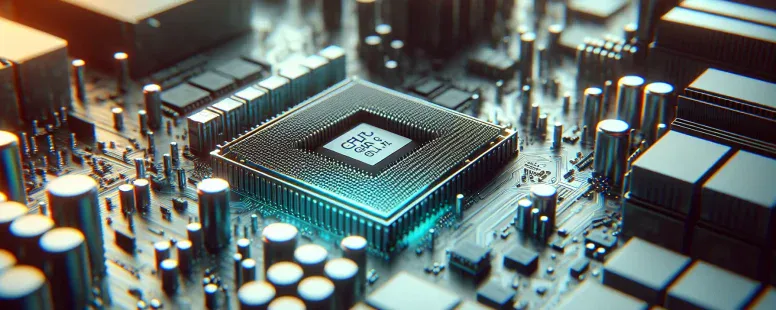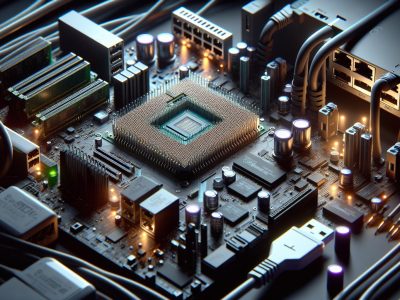Difference Between MHz and GHz: Understanding Device Speed and Performance
Picture navigating the tech world and stumbling upon terms like MHz and GHz. They’re everywhere—on your computer specs, smartphone details, or even gaming consoles—but what do they really mean? These tiny abbreviations hold the key to understanding the speed and performance of your devices, yet they often go unnoticed in the sea of technical jargon.
Think of MHz and GHz as measuring sticks for speed. Whether you’re streaming a movie, gaming online, or crunching data on a spreadsheet, these frequencies determine how quickly your device processes information. But here’s where it gets interesting: while both measure frequency, their scales are vastly different. Understanding this difference can help you make smarter choices when upgrading your tech or troubleshooting slow performance.
Ready to uncover how MHz and GHz shape the digital experience you rely on every day? Let’s jump into the intriguing realm of these essential metrics.
Understanding Frequency Units: MHz And GHz
Frequency units like MHz and GHz define how fast a processor or signal operates. These terms are key to comparing device performance and understanding digital technology.
What Is MHz?
MHz, short for megahertz, represents one million cycles per second. It measures the speed of electronic signals or processes in mid-range applications. For example, AM/FM radios often operate within frequencies expressed in MHz, such as 88-108 MHz for FM radio bands.
In computing, older processors were commonly rated in MHz. A CPU running at 800 MHz completes 800 million cycles per second. While modern devices have mostly transitioned to GHz-scale speeds, some components like RAM still use this measurement.
What Is GHz?
GHz stands for gigahertz and equals one billion cycles per second. This unit is used for high-speed applications where rapid processing is essential, such as modern CPUs and wireless networks. For instance, a processor with a clock speed of 3 GHz executes three billion operations each second.
Wireless technologies like Wi-Fi also use GHz frequencies—2.4 GHz and 5 GHz bands are common examples that impact connection speeds and range. Devices operating in these higher frequency ranges can handle more data but might face limitations over longer distances due to signal attenuation.
Key Differences Between MHz And GHz
MHz and GHz differ primarily in frequency, application scope, and data handling capabilities. Understanding these distinctions helps you evaluate device specifications more effectively.
Speed And Performance
GHz operates at a much higher frequency than MHz, translating to faster processing speeds. For example, a CPU running at 3 GHz completes three billion cycles per second compared to a 1 MHz signal completing only one million cycles per second. Higher frequencies allow devices like modern laptops or smartphones to perform complex tasks such as video editing or gaming with greater efficiency.
While GHz supports high-speed operations, MHz remains relevant for less demanding tasks. Devices like radio transmitters (operating around 88-108 MHz) use lower frequencies effectively where simplicity and reliability matter more than speed.
Applications In Technology
MHz is prevalent in legacy systems and low-power technologies. Examples include microcontrollers in household appliances or analog communication systems like AM/FM radios. These applications prioritize power efficiency over computational power.
GHz dominates advanced computing and wireless communications due to its ability to process vast amounts of data swiftly. Modern CPUs (e.g., Intel Core i7 processors) use clock speeds measured in GHz for multitasking capabilities. Similarly, Wi-Fi routers supporting the 5 GHz band provide faster internet connectivity but with reduced range compared to their 2.4 GHz counterparts operating closer to the MHz spectrum.
Conversion Between MHz And GHz
Converting between these units involves scaling by factors of 1,000 since one gigahertz equals 1,000 megahertz. For instance, a signal rated at 2,400 MHz corresponds directly to 2.4 GHz—a common specification for many wireless devices today.
Real-World Examples Of MHz And GHz Usage
MHz and GHz appear in various devices, shaping their performance capabilities. By understanding where these frequencies are applied, you connect technical terms to everyday experiences.
MHz In Daily Devices
Devices like AM/FM radios rely on MHz frequencies for signal transmission. For example, FM radio stations operate between 88 to 108 MHz, ensuring clear audio quality over short distances. Similarly, older computer processors, such as Intel Pentium III (450 MHz), used this frequency range for basic tasks like word processing or web browsing.
Cordless phones often operate at 900 MHz to maintain reliable communication without excessive interference. These applications show how MHz supports essential yet less demanding technologies.
GHz In Modern Technology
GHz powers high-speed computing and wireless communications. Modern CPUs like Intel Core i9-13900KS achieve clock speeds of up to 6 GHz for intensive activities such as gaming or video rendering. Wi-Fi standards also leverage GHz bands; Wi-Fi 6E uses the 6 GHz spectrum to deliver fast internet speeds with minimal latency.
Smartphones use GHz frequencies for both processors and mobile network connectivity—5G networks operate around 3-4 GHz on sub-6 bands, enabling rapid data transfer for streaming or real-time navigation. This demonstrates how GHz drives advanced functionality in today’s technology landscape.
Why The Difference Between MHz And GHz Matters
Understanding the difference between MHz and GHz is key to evaluating device performance. These frequency measures directly impact how quickly systems process data, which affects your daily interactions with technology. If you’re comparing a computer with a 2.4 GHz processor to one at 3.6 GHz, the latter performs faster tasks like rendering videos or running complex applications.
Device compatibility often hinges on these metrics. Wireless routers supporting both 2.4 GHz and 5 GHz frequencies provide flexible connectivity; 2.4 GHz covers broader distances but experiences interference, while 5 GHz delivers faster speeds over shorter ranges.
Energy efficiency varies between MHz and GHz usage across devices. Older electronics operating at lower MHz consume less power than modern CPUs clocked in gigahertz, which prioritize speed even though higher energy demands.
In professional settings such as data analysis or gaming development, higher GHz translates to smoother operations under heavy workloads. But, if you’re managing legacy hardware or low-power IoT devices relying on MHz frequencies, upgrading might not be necessary unless newer functionalities are required.
Recognizing these differences helps optimize purchases tailored to your specific needs—whether for casual browsing or high-performance computing—and ensures better resource allocation when deploying new technologies in personal or professional environments.
Conclusion
Understanding the difference between MHz and GHz is essential for making smarter tech choices. These frequency measures directly influence how efficiently devices handle tasks, whether you’re streaming a movie, editing videos, or managing professional workloads.
By recognizing their unique roles in performance, energy efficiency, and compatibility, you can better evaluate your devices or plan upgrades that match your needs. Whether you’re prioritizing speed or power savings, knowing these distinctions ensures you get the most out of your technology investments.
- Understanding the Difference Between Annulled and Divorced: Key Legal and Emotional Insights - October 30, 2025
- Ibuprofen vs. Aspirin: A Comprehensive Comparison - October 30, 2025
- The Difference Between Kosher Salt and Other Salts: Texture, Flavor, and Best Uses Explained - October 30, 2025







